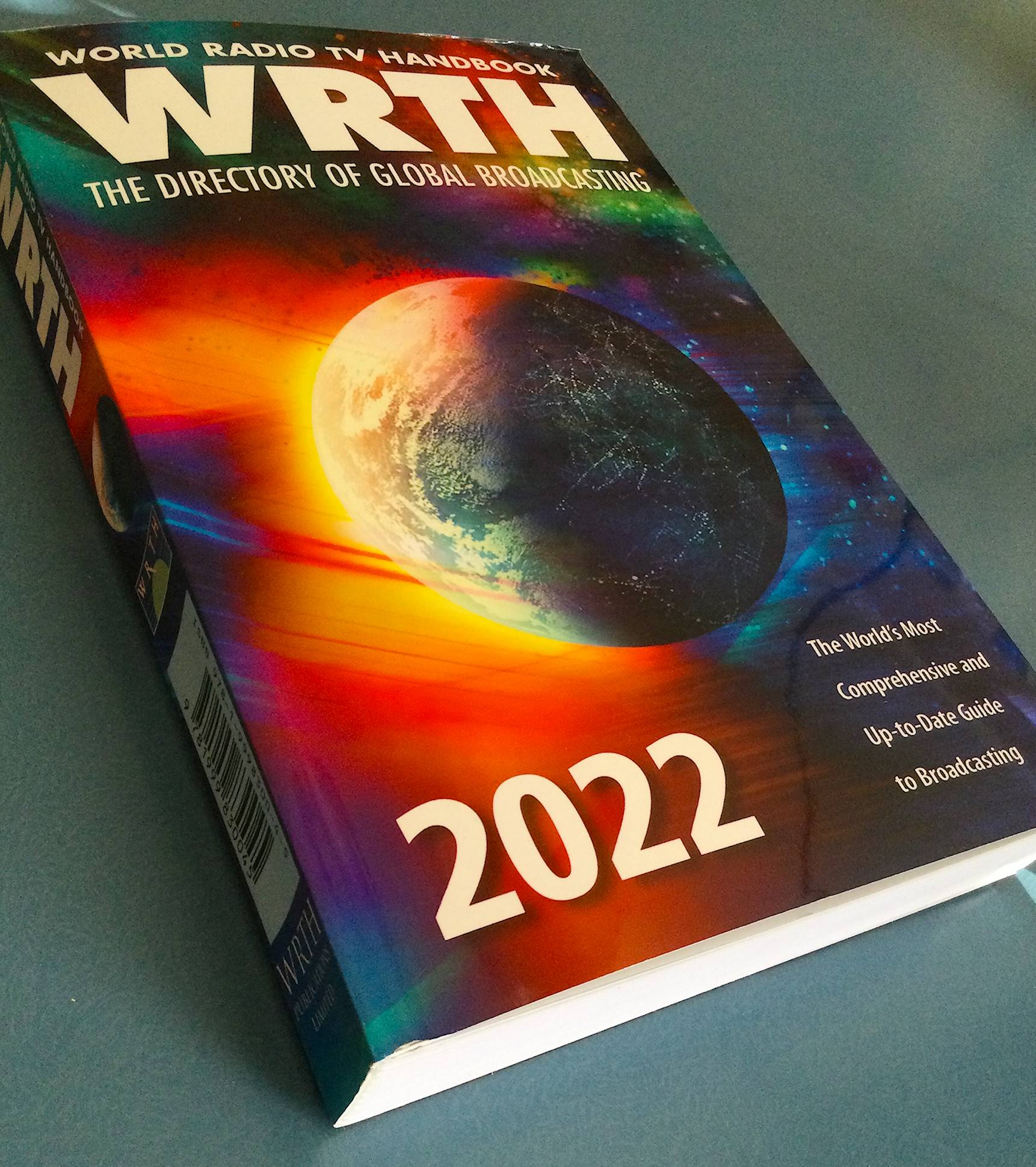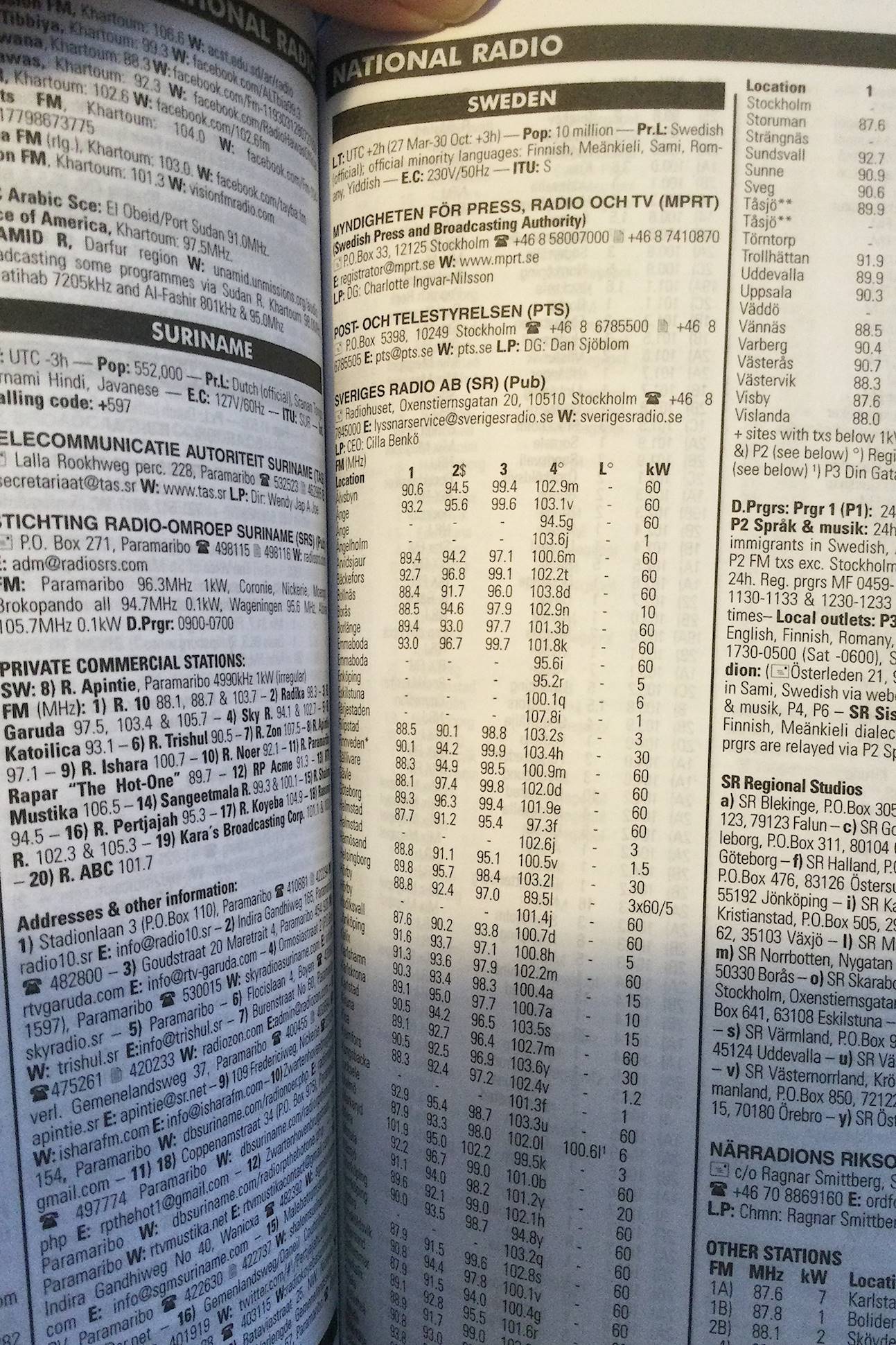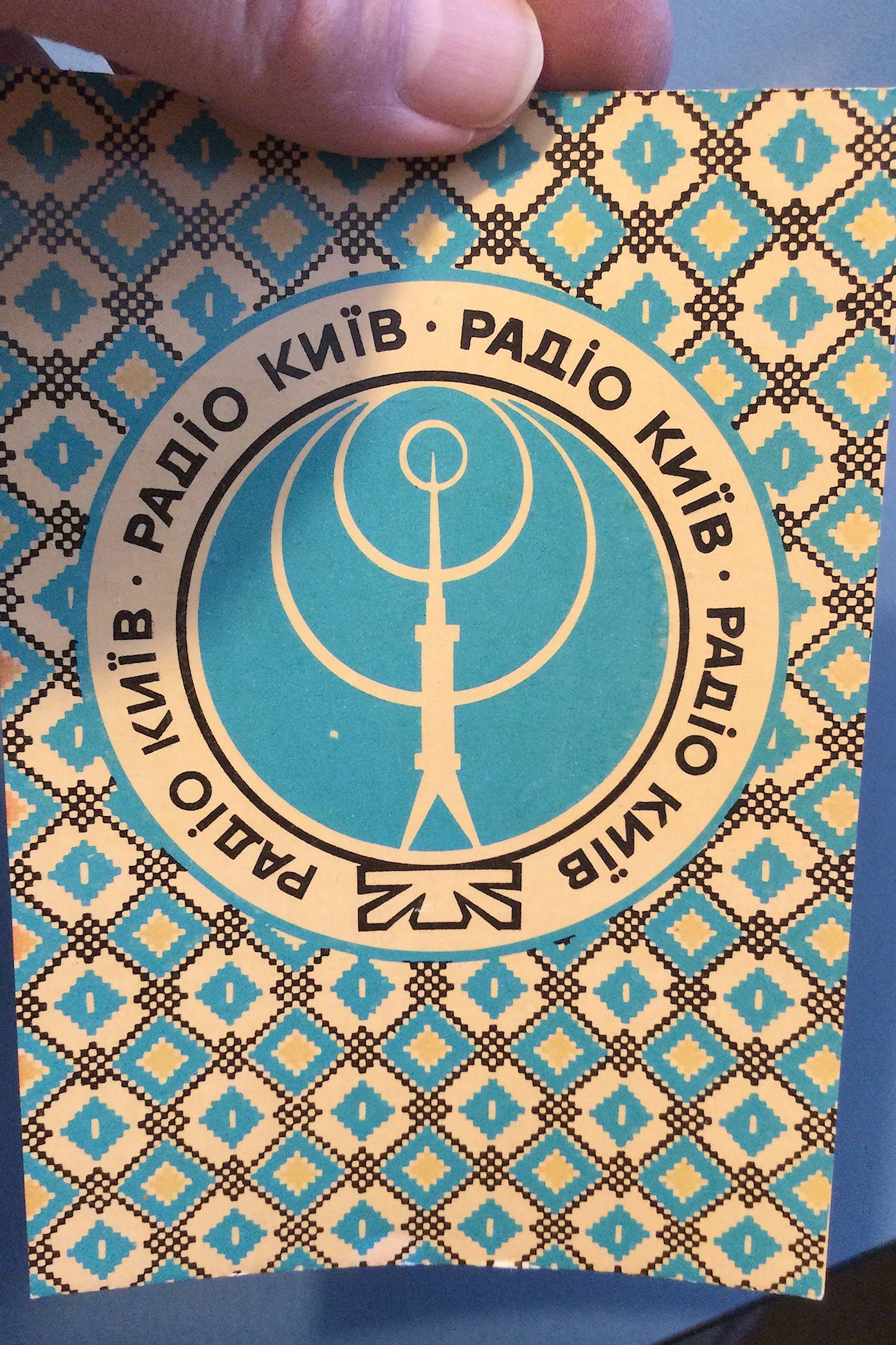
World Radio TV Handbook, WRTH, resembles of a phone directory. This 2022, the 76th edition, has more than 600 pages. It starts with a couple of radio equipment reviews and other articles. The book also contains many reference pages that are useful for radio listening. The majority part of the book are about radio stations, like this example below. Focus is on radio broadcating, especially in my eyes, although also TV is covered.

WRTH is well known to me from when I was younger and listened frequently to radio transmitted from abroad. At that time WRTH was published from Denmark. Now it has been published from England for many years. However, the editorial introduction to this year edition tells it is his last year and he hopes someone else will stand up and take over. I have no insights, but I believe there is a good chance #76 will not be the last one, maybe there will a delay.
With "from abroad", I distinguish between radio intended for international audience and domestic respectively. Today as I understand there are in comparison few international stations, as well as domestic, considering sw, mw and lw.
Many international stations existed when I was younger. Even multiple stations with shows in Swedish. One favorite was the Christian radio HCJB on 11 835 kHz (shortwave), located in Quito Ecuador. Their shows in Swedish had not only Christian content, but also a lot about Ecuador including daily news from Ecuador. Fantastic to get news directly all the way from Ecuador to Sweden! It became a habit to get fresh news from Ecuador.
Like many other I also litsened many times to the commercial Radio Luxembourg at 1440 kHz, 208 m, medium wave. They transmitted with very high power.
This to mention two of all stations; I tuned in to many other stations, from many countries.
Radio is a direct communication between two antennas over the ether (air), no intemediator in between; no service provider, no fibre or copper or anything else that can break or stop the communication. Ok, well, jammers can interfere the traffic. Signal qualiy over radio do vary a lot and quality is far from what is possible today with internet radio. But still it fascinates me that with relatively low power and simple equipment it is possible to transmit especially on shortwave around the globe. And that is also, of course, what private radio amatuers do.
The 2022 edition of WRTH is the first issue I buy for many years. It is nostalgia, of course. But I am also curious to read and get an overview of what the radio landscape looks like today. And not at least, it is an important and great reference to actual radio listening. I think this will inspire me to turn on the long distance radio a bit more again in the future.
Long distance radio listening as hobby is called DXing. It is, or at least was when I was younger, common to send reports to the radio station about signal quality, and in return receive a QSL card. The reports, sent by traditional mail, reported the quality according to SINPO; Signal, Interference, Noise, Phading and Overall. There are many clubs, like the Swedish Sveriges DX-Förbund, for those intererested in long distance radio listening.
Finally, one of the QSL cards from my collection: Radio Kiev in the Soviet era.


Henrik Hemrin
28 March 2022
Comments powered by CComment